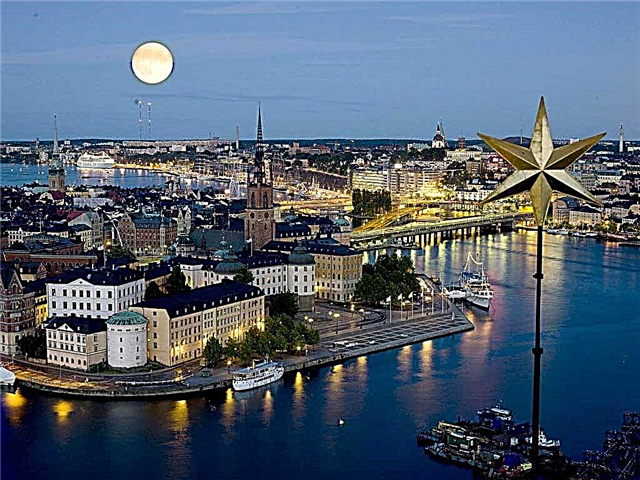In terms of the average wage, Italy is in the middle of the list among the countries of the European Union. It exceeds the income of residents of neighboring Slovenia or Croatia, but is inferior to Austria and Germany.
Economic situation and incomes of the population today
The Italian economy has been in crisis over the past decade. The country ranks 32nd in terms of GDP per capita. In 2008-2016 there was zero or negative GDP growth and only in 2018 did it increase by 1.7% (one of the worst in Western Europe).

The economic situation is aggravated by the influx of migrants, an increase in government debt, and high unemployment (especially among young people). This leads to a slow growth in household income (by 2% in 2017). Nevertheless, Italy remains a developed industrial state, where the average level of annual wages has come very close to € 30,000.
Salary per month by occupation in 2021
In Italy, there are serious differences in the earnings of representatives of various professions, which are determined by the level of education, experience, place of residence, etc.
| Profession | average salary |
| Doctor | 1700-2400 € (and above surgeons, gynecologists, resuscitators) |
| Nanny | 1180–1350 € |
| Guide | 1000 € |
| Housemaid | 1000–1200 € |
| Teacher | 1300–1600 € |
| Engineer | 2400–2650 € |
| Nurse | 1900 € |
| Welder | 1050 € |
| Programmer | 1500–2500 € |
| An electrician | 1900–2100 € |
| Policeman | 1500 € |
| Worker | 850–1100 € |
| Salesman | 960–1110 € |
| Fireman | 2000–2100 € |
| Driver | From 800 € to 2000 € (when working in the field of international transport) |
| Lawyer | 2000–2600 € |
| Driver | 950–1250 € |
| Accountant | 1200–1750 € |
| Builder | 1200–1600 € (depending on the specialty and the amount of work performed) |
| Loader | 850–1100 € |
| Cook | 1700-2000 € (up to 3000 € and more when working as a chef in gourmet restaurants) |
| Dentist | 1800–2100 € |
| Plumber | 1250 € |
| Waiter | 850–1000 € |
| Taxi driver | 1200–1400 € |
Reference! At the top of the ranking of the highest paid specialties are representatives of banking, medicine and pharmaceuticals, and the IT industry.

Minimum wage
There is no statutory minimum wage in Italy. In recent years, the Italian government has been developing a number of measures to establish a minimum wage threshold.
Now the initiative to set the minimum wage lies with the specific employer and the relevant trade union organization, which represents the interests of workers. Its level, as a rule, corresponds to the budget of the living wage - about 800 €.
Average salary
You May Also Like
In 2019, the monthly average salary in Italy, excluding taxes and insurance premiums, was 2442 €, which is almost equivalent to annual earnings in 30 000 €... The net salary, that is, the amount that the average Italian gets his hands on, is approaching 1580 €... Compared to 2018, there is a slight positive dynamics of income of the population - an increase of 2%.
Average starting salary
Upon initial employment in Italy, the employee must be ready to earn money for 30% less than his colleagues with many years of experience (1300-1600 € excluding taxes). The average starting salary for young professionals depends on education, qualifications, employer, etc.
The starting earnings of migrants when performing low-skilled types of work begins from 1000 €... However, it may not differ from the average salary, subject to high qualifications and demand for a specialist.
Maximum salary
The highest incomes in Italy are distinguished by specialists in the field of medicine, the fashion industry, real estate, banking and finance, and energy. In healthcare, the maximum salary for plastic surgeons (up to 20,000 € per month). The realtor's earnings depend on the number of transactions concluded and can reach 6000–7000 €.
Attention! All other things being equal, a middle-aged man with higher education who works in northern Italy for a large international company can count on the highest possible salary.
Labor remuneration by city and region
Italy is characterized by a clear geographical division of the population by income level. The highest earnings among residents of the industrially developed northern part (30 500 €), where the main industrial giants of the country are concentrated, earn slightly less in the central regions of Italy (28 500 €).

The southern regions of Italy, with a predominance of agriculture in economic life and a high level of unemployment, are significantly inferior to the northern regions in terms of the level of income of the population (26 200 €).
The top three regions with the highest annual income levels include:
- Lombardy (Milan): 31 690 €;
- Emilia-Romagna (Bologna): 30 385 €;
- Trentino-Alto Adige (Trento, Bolzano): 30 350 €.
Among cities, residents of Rome, Milan and Venice have the highest earnings: 2-2.5 times higher than the national average.
You May Also Like
The least earners are in the regions of Molise, Basilicata and Calabria (about 24,000 € per year).
Payroll taxes
A person who officially resides in the country for more than 183 days a year is recognized as a tax resident of Italy.
Tax payments are divided into national, regional and municipal. Their total value fluctuates from 30 to 50% gross earnings.
Income tax
Italy has a progressive taxation system in which the interest rate increases in proportion to income.
| Annual income | Income tax rate |
| >15 000 € | 23% |
| 15 001–28 000 € | 27% |
| 28 001–55 000 € | 38% |
| 55 001–75 000 € | 41% |
| <75 001 € | 43% |
Similarly, earnings can be taxed by regional (up to 3.3%) and municipal taxes (up to 0.9%) to the income of individuals.
Social contributions and other taxes. What is tax free?
Social contributions in Italy are paid by both the employee and the employer. They depend on the field of activity of the company, the specialty of the employee and vary within 9,19-10,49%. The contribution to the pension fund is 1000 € per year.

Other most significant tax payments include:
- property tax: 0,76% on the cadastral value (depends on the region);
- inheritance tax: 4–8% (depending on the degree of relationship);
- car tax: about 250 € per year (depending on engine size).
When calculating the tax base, certain types of tax deductions are provided that do not require the payment of income tax: medical insurance, alimony for the spouse, contributions to religious organizations, etc.
The ratio of salary and living expenses
The level of costs in Italy directly depends on the place of residence. The greatest daily living expenses are borne by the inhabitants of Milan and Rome. The cost of renting a 1-room apartment here in a residential area is 800–1100 €... In other cities, the average rental price 400-700 €. Utility bills (including payments for gas, electricity, water, apartment maintenance, telephone and internet) for an apartment of about 70 sq.m. can reach 4000–5000 € in year.
The cost of food in Italy is lower than in most Western European countries: an average family of 3 spends about 400-600 € per month for groceries. One public transport ride costs 1 €, and a liter of gasoline - 1.6 €.
Basic medical care in the country is free, along with an insurance system.
Unemployment Rate and Prospects for Migrants
The unemployment rate in Italy has declined steadily over the past 4 years, reaching by 20192021 -11,2%... In the southern regions, this figure is 3 times higher than in the north of the country: 19.4% versus 6.9%.
The rather high unemployment rate is explained by the significant tax burden, higher wages in other EU countries and an active influx of migrants.
Migrants often do low-paying jobs that do not require special skills. But a professional in a demanded specialty in Italy can count on a decent level of remuneration.
Despite the volatility of the economic situation, which adversely affects the labor market, the average wage in Italy ensures a good quality of life.











